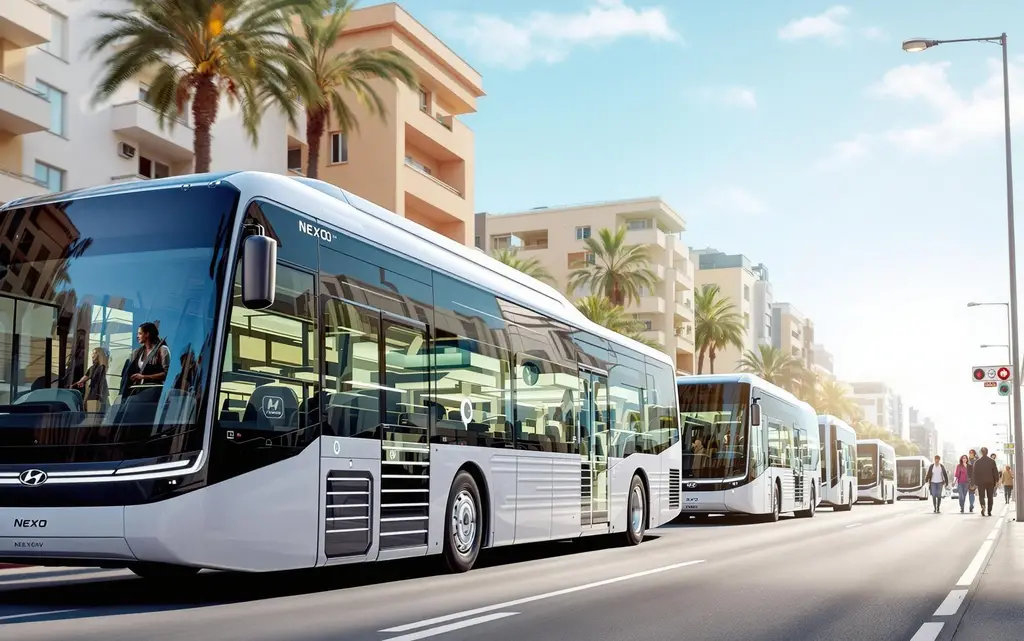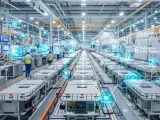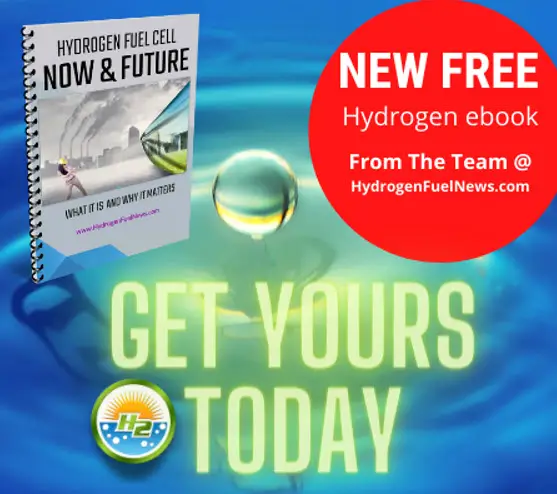
Hyundai and Palma Take the Wheel: Hydrogen Fuel Cell Vehicles Rev Up in India and Spain – Presenting Hyundai Nexo
April 7, 2025Hyundai is stirring the pot again—this time by planning to roll out its hydrogen-powered Nexo in India by 2025. It’s a bold bet, but one that fits snugly with the country’s big-picture goals under the National Hydrogen Mission. Meanwhile, over in Spain, the sun-soaked city of Palma has just launched its very first fleet of hydrogen buses. Two different places. Same clean-energy ambition. And more proof that hydrogen fuel cell technology isn’t just an idea on a whiteboard—it’s already humming down the street.
With air pollution reaching worrying levels and the pressure to meet climate targets only growing, governments and corporations alike are giving hydrogen fuel cells a serious look. What’s happening in the huge, fast-moving Indian market and Palma’s tourist-packed heart shows that clean mobility is picking up speed all around the globe.
Spotlight on Progress: Nexo Heads to India, Mallorca Goes Green
Let’s zoom in on Hyundai, the global carmaker out of Seoul. They’re setting their sights on India, gearing up to introduce the Nexo—their headline-grabbing fuel cell vehicle (FCV)—by around 2025. And the timing couldn’t be better. Major cities across India are grappling with smog and traffic jams. The Nexo could help change that game. Hyundai’s betting big on a market that’s not only booming with middle-class growth, but also backed by a government eager to move away from fossil fuels.
Across the map in Palma, things are also picking up speed. The local city council has officially deployed a batch of hydrogen-powered buses, taking a major step forward in cleaning up public transport. This wasn’t some overnight flip of a switch—it was a full-blown joint effort involving EMT Palma, Enagás (handling the hydrogen), and the Spanish Hydrogen Association (AeH2). Major funding came from the European Union, which continues to push EU cities to take sustainability seriously—and visibly.
How It Works: The Tech at the Heart of the Movement
So what ties these two stories together? One powerful piece of tech: the hydrogen fuel cell. This technology works by combining hydrogen and oxygen in an electrochemical reaction to generate power—no smoke, no carbon—just a bit of water vapor. Compared to traditional batteries, FCVs refill faster and can go longer on a single tank—great news for crowded metro areas in India or high-demand bus routes in Palma.
And big players are lining up to make it all happen. In India, the government has launched its ambitious National Hydrogen Mission and is teaming up with major names like Reliance Industries and the Adani Group. Over in Spain, firms like Enagás, Repsol, Acciona, and Iberdrola are getting behind the green hydrogen economy, expanding everything from production to storage and distribution networks.
Why It Matters: Connecting Local Action to Global Goals
This isn’t just good news for Delhi or the Balearic Islands—it’s a peek at how regions can lead the way in tackling the planetary crisis. Hydrogen is quickly emerging as a key player in the race to hit net-zero emissions. Sure, battery electric vehicles (BEVs) have been dominating the headlines, but FCVs bring some big wins to the table: faster refuelling, longer ranges, and reliable performance where EV infrastructure is struggling to catch up—exactly what’s needed for long-haul driving or underserved areas.
A decade ago, hydrogen seemed like lab-only tech. Today, it’s got real traction. Commuters in Palma can catch a lift on hydrogen buses, and busy Indian drivers might be cruising in a Nexo before long. That’s a major leap from concept to concrete.
Looking Ahead: Market Potential and Environmental Payoffs
For Hyundai, this move into India could offer more than just early sales—it’s a chance to lead the market before others catch up. That kind of head start could unlock massive opportunities in partnerships, branding, and long-term infrastructure. And for cities like Palma, hydrogen buses could be the key to improving air quality and cutting emissions without sacrificing public transport capacity—something especially important in places packed with tourists year-round.
On the bigger stage, each step toward hydrogen-powered transport nudges us closer to cleaner cities and less dependence on fossil fuels. Industry watchers believe fuel cell vehicle adoption could skyrocket by 2030, especially for commercial fleets and long-distance transport. That’s not just promising for automakers—it’s a win for the planet too.
Reality Check: High Hurdles on the High Road
Of course, we’re not there yet. FCVs still face steep production costs, and hydrogen fuelling stations remain pretty sparse even in tech-forward countries. And while the price of green hydrogen is dropping, it’s not on par with diesel or gasoline just yet. That’s where smarter policy, targeted incentives, and private-sector push come in. We don’t just need better cars—we need an entire ecosystem that can support them.
Still, these challenges also open new doors. Governments could ramp up with subsidies (like India’s proposed clean vehicle incentives), while the private sector gets to work cracking down production and storage costs. Early players like Palma and Hyundai are laying the groundwork that others can build on.
The Next Chapter: Turning Inspiration Into Action
This story is about more than a snazzy new SUV or a clean urban bus. It’s a glimpse of what’s possible when public policy, cutting-edge tech, and plain old determination come together. No matter whether you’re watching from Mumbai’s rush hour, Palma’s palm-lined routes, or inside a European sustainability conference room, one thing’s crystal clear: hydrogen mobility is finally on the move.
And this is just the opening act. If we want this momentum to last, we’ll need even more collaboration—across borders, across industries, and across levels of government. With bold steps like Palma’s bus fleet and Hyundai’s India strategy leading the way, the road to low-emission transport is looking more real every day.



 With over 15 years of reporting hydrogen news, we are your premier source for the latest updates and insights in hydrogen and renewable energy.
With over 15 years of reporting hydrogen news, we are your premier source for the latest updates and insights in hydrogen and renewable energy.